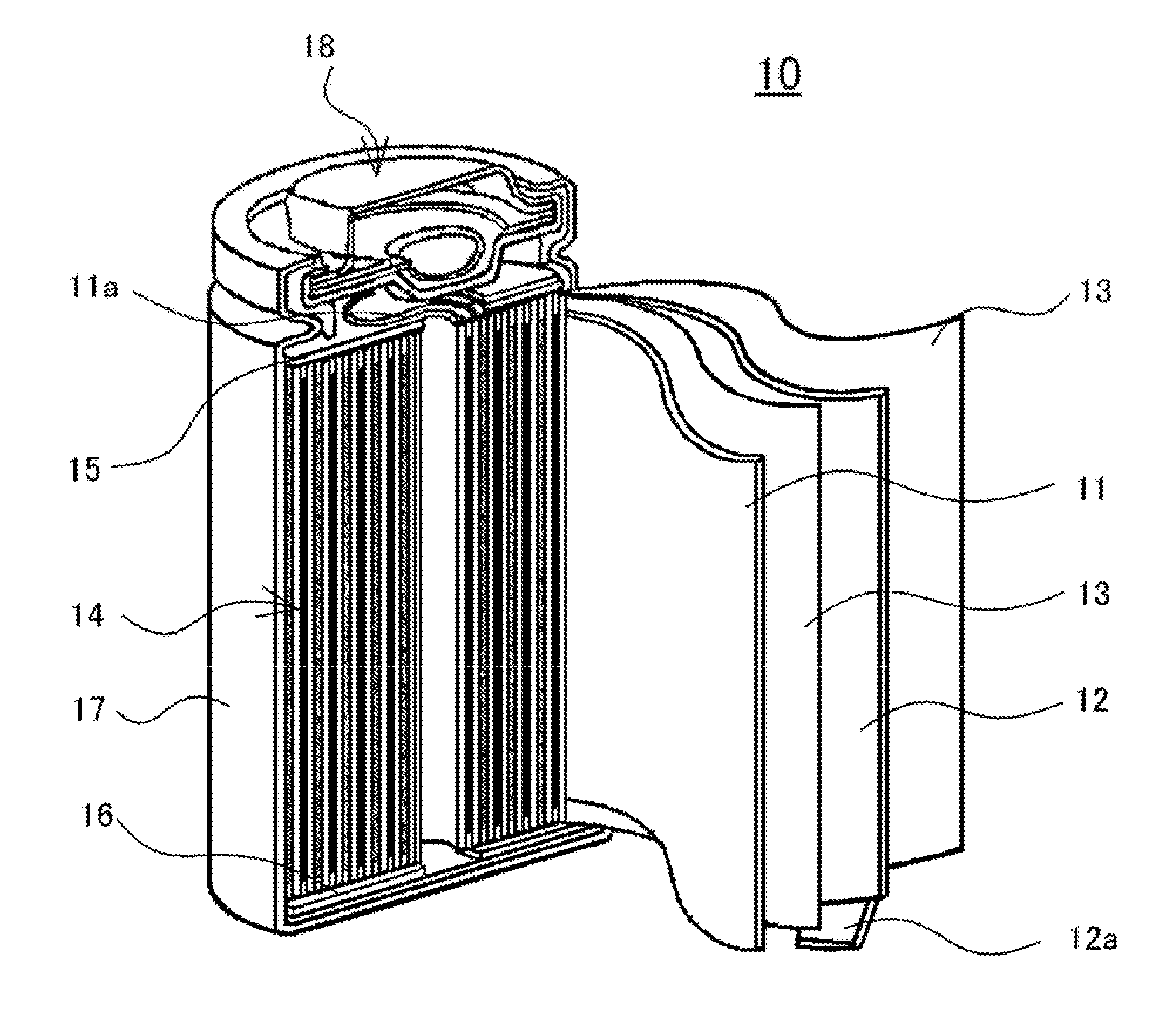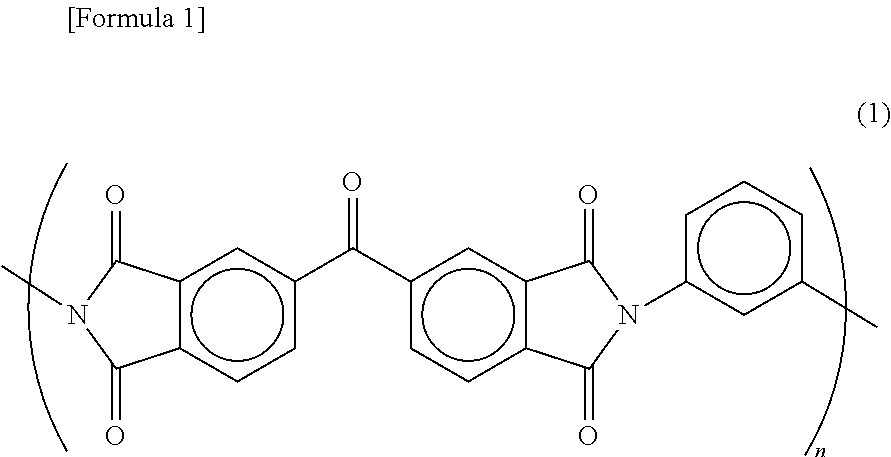Non-aqueous electrolyte secondary battery
- Summary
- Abstract
- Description
- Claims
- Application Information
AI Technical Summary
Benefits of technology
Problems solved by technology
Method used
Image
Examples
reference examples 1 to 4
, Comparative Examples 1 to 8, and Examples 1 and 2
[0026]First, nonaqueous electrolyte secondary batteries containing the graphite as the negative electrode active material of Reference Examples 1 to 4, Comparative Examples 1 to 8, and Examples 1 and 2 will be described.
[0027][Preparation of Positive Electrode Sheet]
[0028]Layered lithium nickel manganese cobalt composite oxide and lithium cobalt oxide containing magnesium, aluminum, and zirconium (LiCo0.973Mg0.005Al0.02Zr0.002O2) were mixed in the ratio of 1:9 by mass to be used as the positive electrode active material. The mixture was mixed with carbon black as a conductive auxiliary agent and a fluorine resin as a binder in the ratio of 94:3:3 by mass and the resultant mixture was dissolved in N-methyl-2-pyrrolidone (NMP) to make a positive electrode active material paste.
[0029]The positive electrode active material paste was evenly applied on both sides of an aluminum foil having a thickness of 15 μm by the doctor blade method. ...
reference example 5
, Comparative Examples 9 and 10, and Examples 3 and 4
[0059]Next, Reference Example 5, Comparative Examples 9 and 10, and Examples 3 and 4 each containing silicon as the negative electrode active material will be described.
[Preparation of Positive Electrode Sheet]
[0060]The positive electrode sheet that was used was prepared in a similar manner to that in Reference Examples 1 to 4, Comparative Examples 1 to 8, and Examples 1 and 2 above. For each positive electrode sheet of Reference Example 5, Comparative Example 9, and Examples 3 and 4, aluminum oxide was mixed with a water-soluble binder and water to make a slurry, and the slurry was applied on both sides the positive electrode sheet prepared as above by the doctor blade method to form an inorganic particle layer having a thickness of about 0.5 μm to 3 μm on each surface of the positive electrode sheet.
[Preparation of Negative Electrode Active Material]
[0061]First, a polycrystalline silicon solid was prepared by a thermal reduction...
PUM
 Login to View More
Login to View More Abstract
Description
Claims
Application Information
 Login to View More
Login to View More - R&D
- Intellectual Property
- Life Sciences
- Materials
- Tech Scout
- Unparalleled Data Quality
- Higher Quality Content
- 60% Fewer Hallucinations
Browse by: Latest US Patents, China's latest patents, Technical Efficacy Thesaurus, Application Domain, Technology Topic, Popular Technical Reports.
© 2025 PatSnap. All rights reserved.Legal|Privacy policy|Modern Slavery Act Transparency Statement|Sitemap|About US| Contact US: help@patsnap.com



